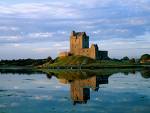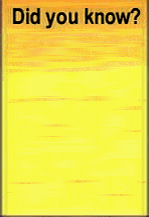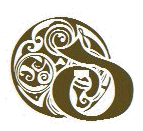The English government urged people to give up their lands to the Crown, so that they could be given a re-grant with a clear title. Often, however, those who did so got back only a fraction of their former land holdings or, in some cases, none at all.
THE WAKEMAN GRANT
A major injustice over land was inflicted on the MacAuliffes in the early 17th century. In 1605 Arthur Chichester was sworn in as the new Lord Deputy. Shortly before his appointment a "King's Letter" had arrived at Dublin Castle, the seat of government, directing that a grant of land be made to an Englishman, one John Wakeman. The Lord Deputy of the time honoured the 'letter' with a generous grant and there the matter should have ended. However, when Chichester took office the letter was brought out again and used to make further, but illegal, grants. Among the lands fraudulently granted to Wakeman and his associates was Clanawley. As D.H Allen says "These illegal grants were later repudiated but it was too late as the damage had been done and the MacAuliffes never recovered from it."
The Wakeman grant had been made some time before 1610, and in December of that year Clanawley was sold to Sir Thomas Roper of Castlemaine. The relevant document reads;
"Deed dated 5th December, 7th James 1 (A.D. 1610) whereby
John Wakeman, esq., Sir James Carroll, knight, enfoeffed, sold
and conveyed to Sir Thomas Roper of Castlemaine in County
Kerry, knt., - Cork county, the castle town and lands of
CastleMcAwlie, with the four quarters of land thereunto
belonging, the castle, town and lands of Carrigecashel and one
quarter of land thereunto belonging, all parcel of the estate of
Melaghlin McDermott McAwley attained - to hold
forever as of the Castle of Dublin in common soccage."
(Calendar of Patent Rolls - James 1 )
(The Melaghlin McDermott McAwlie named here was Malachy More who was reported to have died in 1579).
Sir Thomas Roper was the same man who had imprisoned Malachy MacAuliffe in 1602. While the prisoner of Sir Thomas, Malachy had been ordered to appear at Code's Castle in County Cork within twenty days and in default to give up the MacAuliffe estates to the Crown (see here). All of this provides strong evidence that there was a conspiracy to rob the MacAuliffes of their land by whatever means.
BARRY CONNECTION
In 1612 James fitz Nicholas Barry of Walshetown, near Buttevant, bought Clanawley from Sir Thomas Roper for the sum of two thousand, five hundred pounds. A number of documents for that period link the name of Malachy MacAuliffe of Carrigcashel with that of Barry. Malachy was the chieftain of the MacAuliffe clan at that time and it seems that Barry purchased Clanawley on behalf of the MacAuliffes. This possibility is given further credence by later evidence that the MacAuliffe lands were heavily mortgaged. It was common in those times for a friendly Lord to redeem confiscated lands in the interests of chieftains or lords who had been disposessed. D.H. Allen says that some historians have suggested a possible blood relationship between the MacAuliffes and Barrys. It is interesting that a number of MacAuliffes were buried in Buttevant Abbey, which was founded and patronised by the Barrys. Prior to that the ancestral burial ground of the MacAuliffes had been Clonfert, in Newmarket.
PLANTATION OF CLANAWLEY
In December 1614 a Commission was set up to inquire into the lands of Clanawley, and its findings suggest that its sole purpose was to set aside a parcel of land to be granted to Sir Richard Aldworth, the Provost-marshal of the Crown forces in Munster. Aldworth was himself a member of that commission. A grant of part of the MacAuliffe land was eventually made to Aldworth, with the condition that the lands were to be settled by twenty families of English birth.
The "Plantation of Clanawley" began what became known as the "Big House" way of life. The "Big Houses" became centres of English influence. English language and custom crept in and Irish people were considered as second class. With the loss of land many became tenants or servants in their own ancestral lands.
NEWMARKET
The old name for Newmarket, the hub of the MacAuliffe lands, was Kilmacroghan, "The Church of the Son of Crohan." The change of name to the English 'Newmarket' took place about A.D. 1620 when a further grant of land was made to Aldworth on May 28th of that year.
"Grant to Sir Richard Aldworth, knight, for a Thursday market
and two fairs at Kilmacroghan als. (otherwise) Newmarkett
in Clanawley"
(Patent Rolls - James 1)
DISPUTE WITH O'KEEFFE
Part of the MacAuliffe land had been the subject of an ongoing territorial dispute with the neighbouring O'Keeffes. Both claimed the land lying between the Araglin and the Blackwater. This dispute was finally resolved in 1634 through the intervention of O'Callaghan of Clonmeen. Both chieftains were married to two sisters, O'Callaghan's daughters. O'Callaghan intervened by calling together the two chieftains and the oldest members of both clans. An agreement was reached whereby the disputed land was divided between the two clans, the division being marked by a ridge running north to south.
FURTHER LAND LOSS
In August 1637 Dermot MacAuliffe, chieftain of the clan, died owning half of Clanawley, including the Castlemacauliffe section, as shown by an inquiry of 1638. Most of the lands were heavily mortgaged due, most likely to the repayment due to James fitz Nicholas Barry.
By 1641 the MacAuliffe - owned lands had been reduced to three scattered holdings; Drominarrigle, consisting of the present townlands of Drominarrigle, Aghaneenagh, Acres, Killasseragh, Knockmanagh, Gorteragh and Gortateeboy; the townland of Knocknahorney (Barleyhill) in the Carrigcashel quarter; and the eastern half of Coolavota, a total of about two thousand acres. These remnants were owned by Florence (Fineen) MacAuliffe of Carrigcashel. He was probably the son of Dermot, who was killed in 1602. Florence was outlawed in 1641. He is considered to be the last true chieftain of the clan, for while there were chieftains after him, they were chieftains in name only, for they no longer had land to rule over.
FINAL CUT
The final cut came after the Battle of Knocknanuss in 1647, when the Irish were heavily defeated by Cromwell's parliamentary forces. For months after they were hunted by the English. In 1666 the final alienation took place when the remaining MacAuliffe lands were split up, the lands in Drominarrigle being granted to Dame Croope, the remainder of Coolavota to John Gifford and Barleyhill to Lord Broghill, first Earl of Orrery.
In the years that followed the loss of their territory the MacAuliffes took every opportunity to plague those who now owned their lands and their English overlords. After the death of the Earl of Orrery disputes arose over land ownership of certain parts of Clanawley, first between sections of the Orrery family, and also between them and Aldworth. Through the years of hardship and being hunted as fugitives the MacAuliffes had kept legal and other documents safe, and when the opportunity arose they took advantage of it. In the midst of the court proceedings involving the Orrerys a MacAuliffe came forward claiming to be the rightful owner of all Clanawley. The Orrery camp was thrown into confusion and two eminent lawyers, Sir John Temple and Baron Hartstong, were consulted.
Sir John Temple found that the only claim the Orrerys had was that of possession, and Baron Hartstong was of the opinion that MacAuliffe was the rightful owner and that not even a direct grant from the King could overrule that. Unfortunately, MacAuliffe was not able to afford the cost of taking his claim through the courts and it is believed he may have agreed to a settlement with the Orrerys. Exact information can not be found in the records. It is also not clear just who that MacAuliffe was and what his claim was to the hereditary chieftainship. What is known is that none of their ancestral land came back into the possession of the MacAuliffes.
The MacAuliffes thus disappeared as landowners to become tenants in the land of their fathers.

Click image to read the ancient McAuliffe clan legends, in story, and in the verses by Edward Walsh, the Poet of Duhallow

Links to Irish history and culture, genealogy, Irish interest sites
Leave a message or read messages from others seeking clan information, searching for relatives, etc.

The webmaster would appreciate being advised of any broken links you find while viewing any of these pages
Hit counter restarted 10 June 2006


If you haven't already done so, please take a moment or two to sign the Guestbook?





Won't you please take a moment or two to sign the Guestbook?
on the McAuliffe Discussion Forum
Where the webmaster offers opinions on matters affecting the clan


Don't like the music? Turn
it off here or play it again
The openiing tune is
'The Minstrel Boy'
This and most other midi tunes
on this site were sequenced by Barry Taylor























Irish castles worth visiting. Click image to see list

Site designed and maintained by Bob McAuliffe, Greymouth, New Zealand. This page last updated 31 January 2008
An Irish Quote
"For the Gaels of Ireland
Are the men that God made mad,
For all their wars are merry,
And all their songs sad !
C.K. Chesterton






So I don't have any yet, but when I do I'll have somewhere to put them.






Much of the material fort this page has come from D.H Allen, 'The McAuliffes of Clanawley", 1991.
isputes over land were always major causes of friction in Irish affairs, and especially so during the reign of James 1 of England in the first quarter of the seventeenth century. Greedy and unscrupulous men searched the country for faulty land titles, often aided by officials in high place for their own selfish ends.


While Saint Patrick is credited with driving the snakes out of Ireland, the fact is that there were none there to drive out., at least not in the last 1.8 million years. Some sources beleve the story may have been a symbolic reference to pagans, who had a serpent as their emblem.
Check this fun card!




























